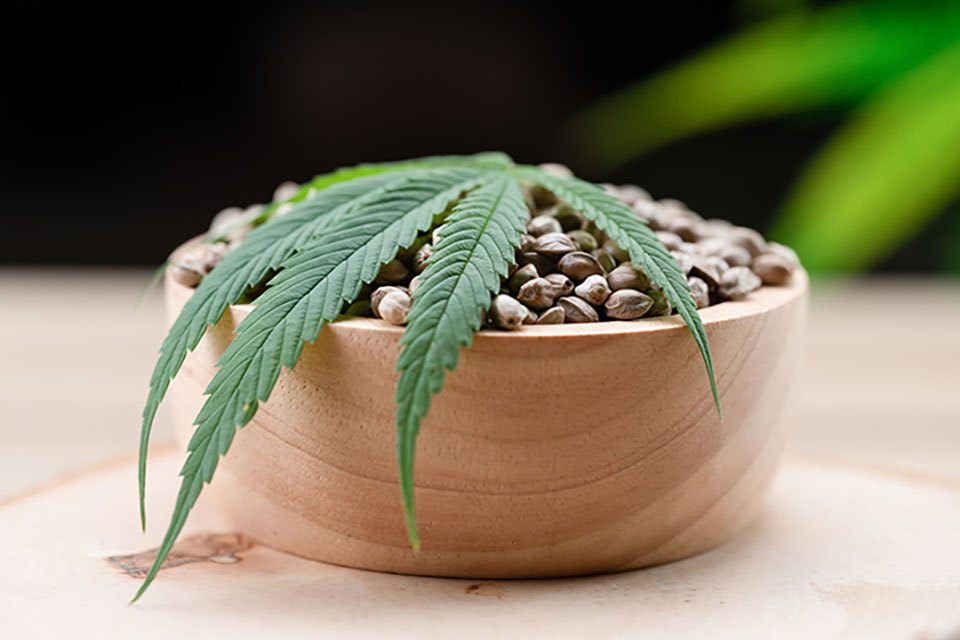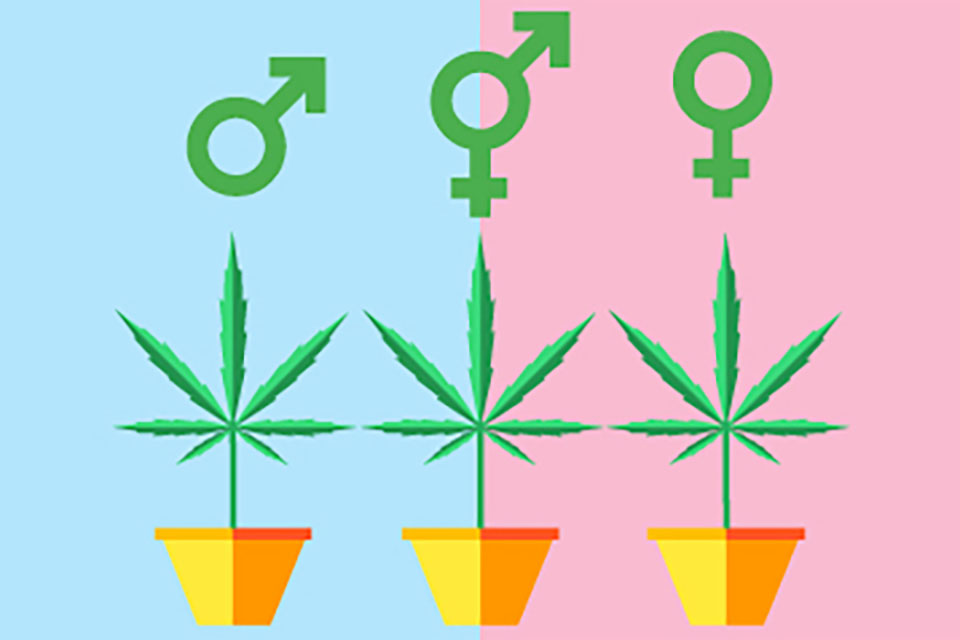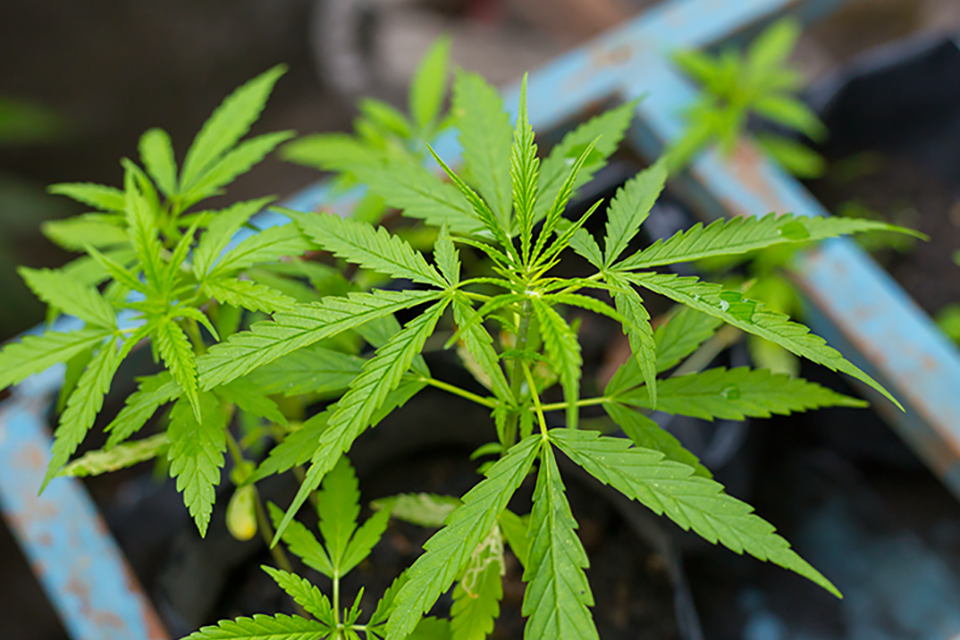
How to Determine Cannabis Plants Gender
There are a lot of processes involved in creating bountiful cannabis crops, but none are more important than determining the sex of plants. Whether you are cultivating marijuana for personal use or starting a business growing our wholesale seeds, you need to be able to identify male and female plants as well as those that don’t fit into either category. Determining and even controlling the sex of plants means understanding their reproductive cycles. It is important to know the differences between regular and feminized seeds, whether you are growing classic 710 seeds or medicinal CBD seeds. You will also want to become familiar with options like cloning, so read on to find out more.
Cannabis Plants Have Genders Just Like Humans
Marijuana plants are dioecious, which means they can be male or female. Their reproductive processes are therefore closer to that of humans than other plants. Each cannabis plant has two sets of sex chromosomes. Females have XX chromosomes and males XY chromosomes. In their natural state, crops include about half females and half males, like humans. Some plants have both male and female characteristics.
The environment, as well as genetics, influences the gender of cannabis plants. It is important to understand the traits of each sex so you can decide which gender best fits your needs.
Why Cannabis Gender Matters
The cannabis strains most sought after by consumers are the female plants which produce the large resinous flowers that you are used to seeing on dispensary store shelves. The females produce the vast majority of the cannabinoids and terpenes that give each cannabis variety its own unique effects and flavors. Male seeds are really a lot less useful, and only come into play when you want to produce a new batch of seeds. A recent piece on the Green State site advised that an entirely male-free crop is the surest way to guarantee a healthy harvest.
If you use traditional growing methods, you will need to identify male plants and remove them before they can pollinate female plants. Fertilized females produce less THC, an especially potent cannabinoid. Professional growers, whether in Florida or Maryland, typically destroy most of their male plants, which means they lose half their crops. Some plant twice what they need to get enough female plants for their needs.
Other growers use male plants to create hemp fibers that become the fabric for clothing and household items. Males can also be planted in gardens to act as pest control. They produce terpenes, aromatic oils that repel pests.
Determine Sex as Soon as Possible
If you grow marijuana naturally using regular seeds, it is important to determine the sex of your plants as early as possible in their life cycles. Males and females have some obvious differences in appearance that can help. For one thing, males are usually taller, and each sex has unique reproductive organs.
However, sexing plants can be tricky because plants may be close in height, and their gender is not always obvious until they are mature. Critical differences might not show themselves until plants are ready to pollinate, and that may be too late.
Signs of Female Plants
Both male and female cannabis plants have flowers, but male flowers bloom first. Females’ flowers resemble sacs with two feathery-looking stigmas growing out of them. Stigmas are found in a node area of the main stalk. It is a section where a branch grows from another branch, or a branch grows from the main stalk. Female flowers develop small cream, yellow, or white flowers with hairy white pistils that trap male pollen.
Signs of Male Plants
Male plants develop more quickly than females and become taller about two weeks sooner. Their height makes it easy for them to drop pollen on female plants. They may flower as early as a month before females, which can help identify them. Males grow straighter than females and have fewer buds. Those they produce are tight green clusters that grow near the tops of plants.
Pollination occurs quickly after plants flower, which can make identifying gender a challenge. As a result, some professionals focus on cannabis preflowers that grow on the main stem and tips of branches. According to growersnetwork.org professionals, examining preflowers when plants are 4-6 weeks old can provide reliable results. When using this method, look for a calyx on a stem or stalk. A raised calyx indicates a male. A plant without a raised calyx is female.
When you first begin to use preflowers to identify gender, it may not be easy to spot the differences, but it gets easier with practice. When you grow cannabis outdoors (in California. Nevada, or South Dakota) You want to be extra-diligent about containing your male plants because their pollen can travel for many miles and create seeded plants in your neighbors’ garden.
There Are Alternative Ways to Determine Sex
If you like to use more than one method of identifying the sex of plants, growth patterns, or germination differences will also reveal gender differences.
Examine Growth Patterns
Both male and female plants flourish in their vegetative state but change as they mature. These differences can help determine sex. As females grow from seedlings to the vegetative state, they develop complex branching. Males become taller and do not fill out as much. Be cautious about tossing plants at this stage. Assessing growth patterns can give you an idea of what plants to watch but does not guarantee 100% accuracy. It works best on outdoor crops.
Identify Germination Areas
When you need to know plant genders as soon as possible, you can study plants as they germinate and determine where they come out of the seed.
Some professionals have a theory that female plants sprout from the top or bottom of seeds. Side sprouts are likely to be males. It is not a foolproof method, but some growers who have used it report 90% accuracy. It is a good idea to let plants grow before definitely deciding on their gender since there is no scientific evidence that backs up the idea.
Cloning Is a Foolproof Way to Be Sure of Gender
The best way to be 100% sure of plants’ genders is to clone them. Sites like Leafly offer detailed instructions. However, the basic process is fairly simple and consists of the following steps:
- Clip a small amount of growth from a mother plant
- Put your cutting in potting soil and allow it to grow
- Wait a few days and then use 12-hour light/12- hour dark cycles to force flowering
- Keep clones separate from hosts
Clones have the same DNA as the mother plant, so they are the same sex. You can confirm clones’ genders when they reach the flowering stage. You will need a tracking method so you can easily tell which clones came from which hosts.
Marijuana Plants Can Be Hermaphrodites
Some cannabis crops are neither male nor female. They are hermaphrodites (also called “hermies”) that have both male and female traits. Stress causes some plants to become hermaphrodites, but they can also inherit the trait.
Identifying hermies is fairly simple because they have both male and female floral structures. Growers dread finding them in their crops because each plant has the potential to pollinate females. That can be a huge problem for sinsemilla growers, whose goal is to harvest seedless buds. Once female cannabis is contaminated by pollen, it will produce seeded buds.
There are various types of hermies. True hermaphrodites are born that way and may become females. Stress easily turns them into hermaphrodites. There are also female plants that become hermies due to stress. They are called “bananas” due to the banana-like growths they produce. Most hermies begin as females, but males can grow pistil flowers.
Hermaphrodites can produce small amounts of THC, so some growers keep them. However, most cull the intersex plants to preserve their female crops.
Feminized Seeds Guarantee Female Plants
The ideal cannabis crop includes only female plants because it eliminates the problem of identifying and removing males. Using feminized seeds may not guarantee 100% female plants, but it improves the odds tremendously.
You can create feminized seeds by interrupting light cycles during flowering. However, most professional breeders use the more controlled method of spraying female plants with a solution of silver thiosulphate or colloidal silver.
Seed companies offer a variety of feminized seeds, so you are not limited to a particular strain. Even if you are starting with a small garden, you can experiment with several strains. It’s a very efficient way to cultivate marijuana. You won’t spend time guessing at the sex of plants or culling males and hermaphrodites.
Breeding Plants Requires Regular Seeds
The type of seeds you use to grow cannabis will depend on your growing conditions, available space, and the amount of time you have. It also depends on personal preference and your level of experience.
If your primary goal is to produce high-grade marijuana, feminized seeds or cloning are your best options. To breed plants, you will need regular seeds, since they produce both male and female plants.
There are other advantages to using regular seeds. You have a chance to create your cannabis strain. If you are interested in growing your favorite classic strains, you might need to use regular seeds because some older strains are not available in the feminized market.
Male vs Female Cannabis Plants
Cannabis growers must know how to identify male, female, and hermaphrodite plants. There are a variety of methods they can use to determine the sex of plants. It is important to locate male plants quickly and prevent them from pollinating females, because high-quality marijuana comes from unpollinated females. Growers who want to increase the chances of producing females can clone plants or use feminized seeds. Those who plan to breed cannabis need to plant regular weed seeds.


